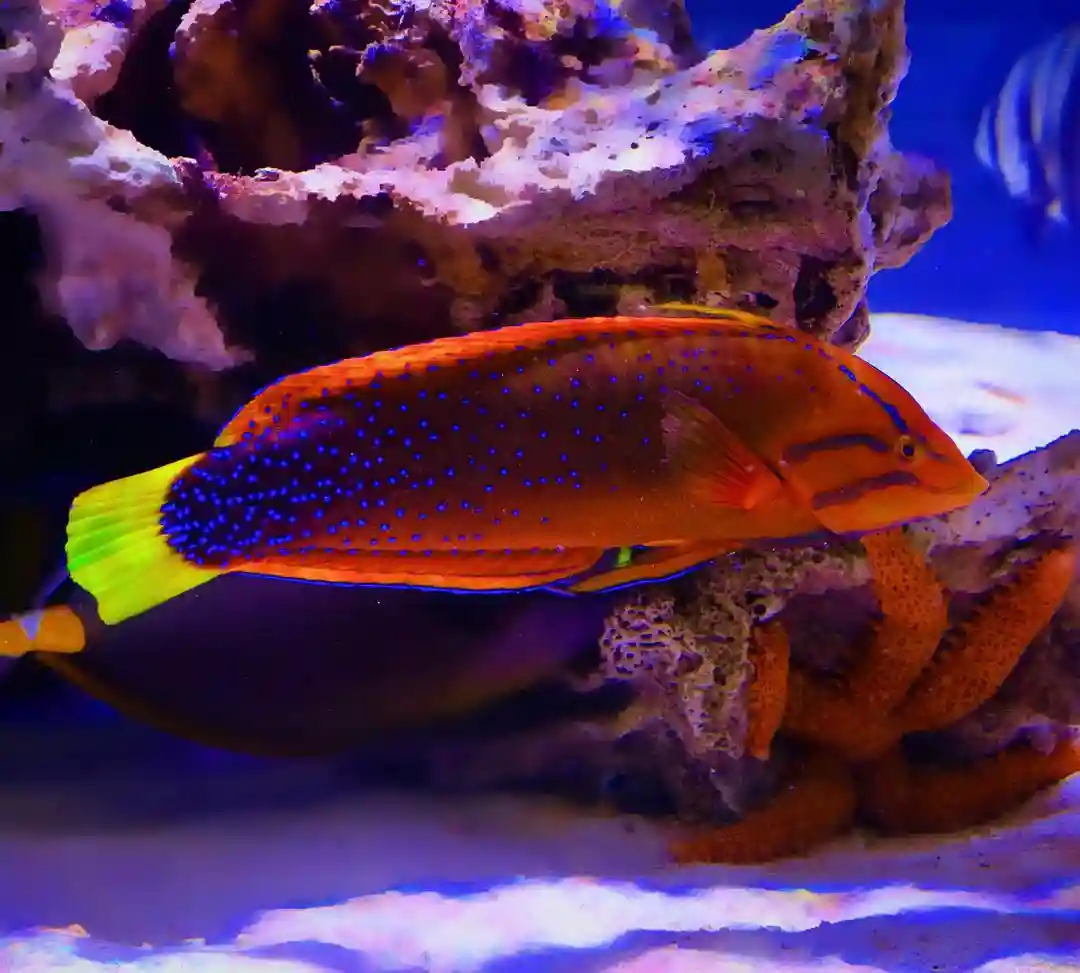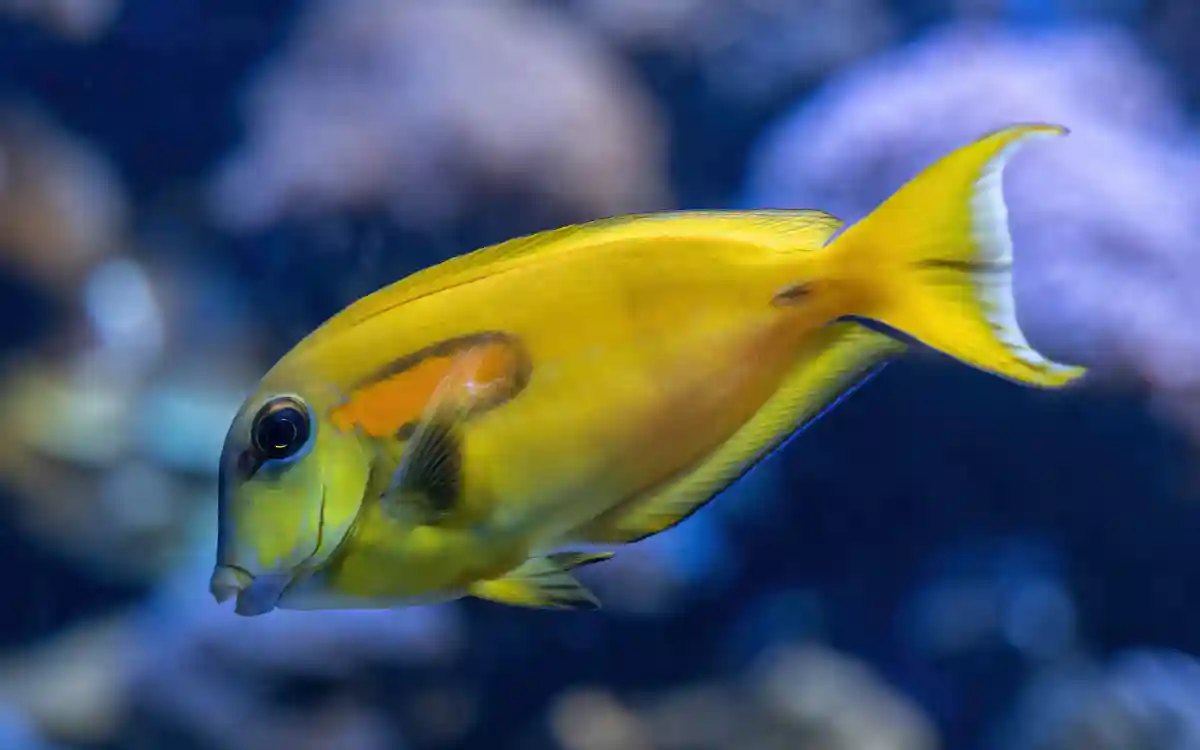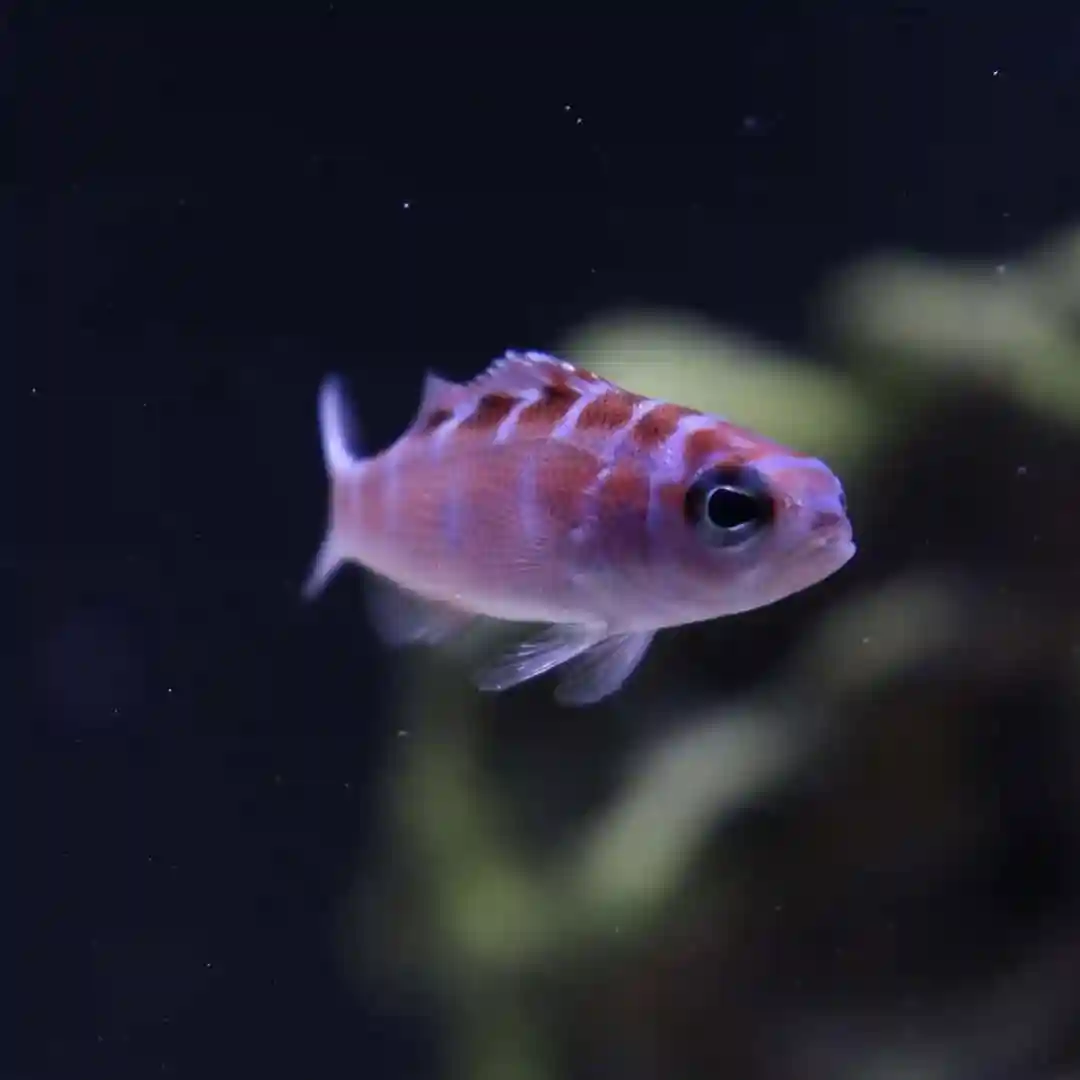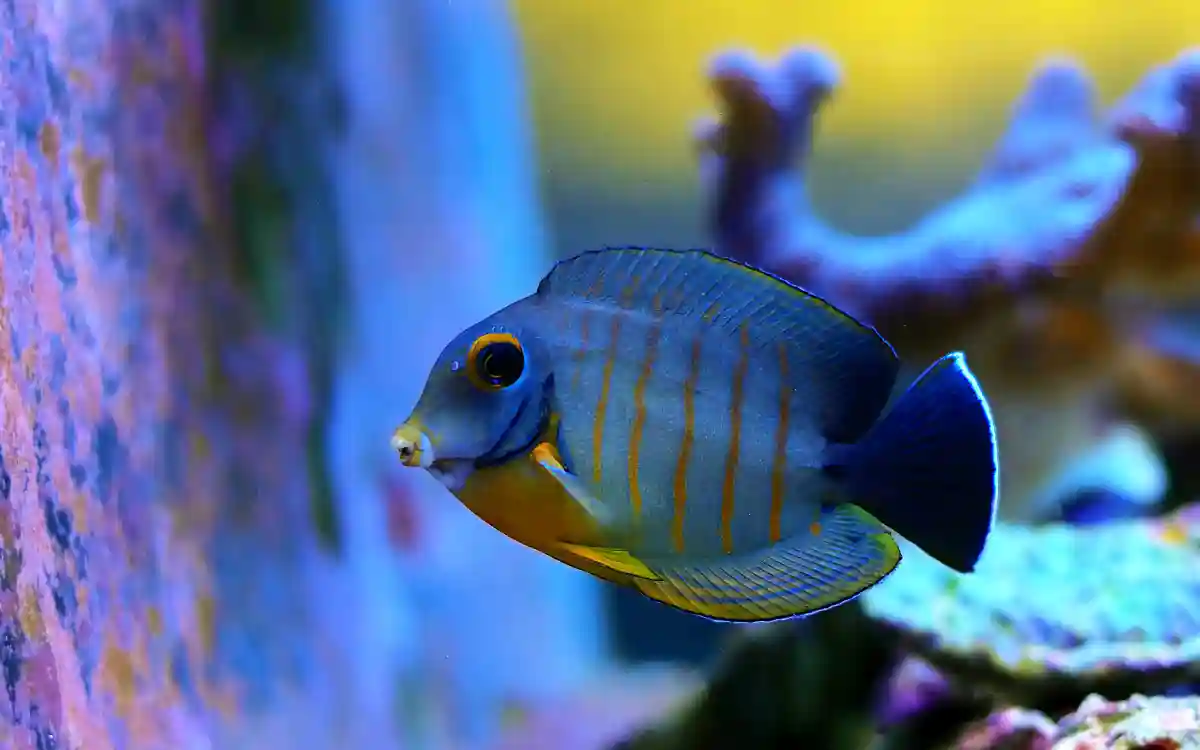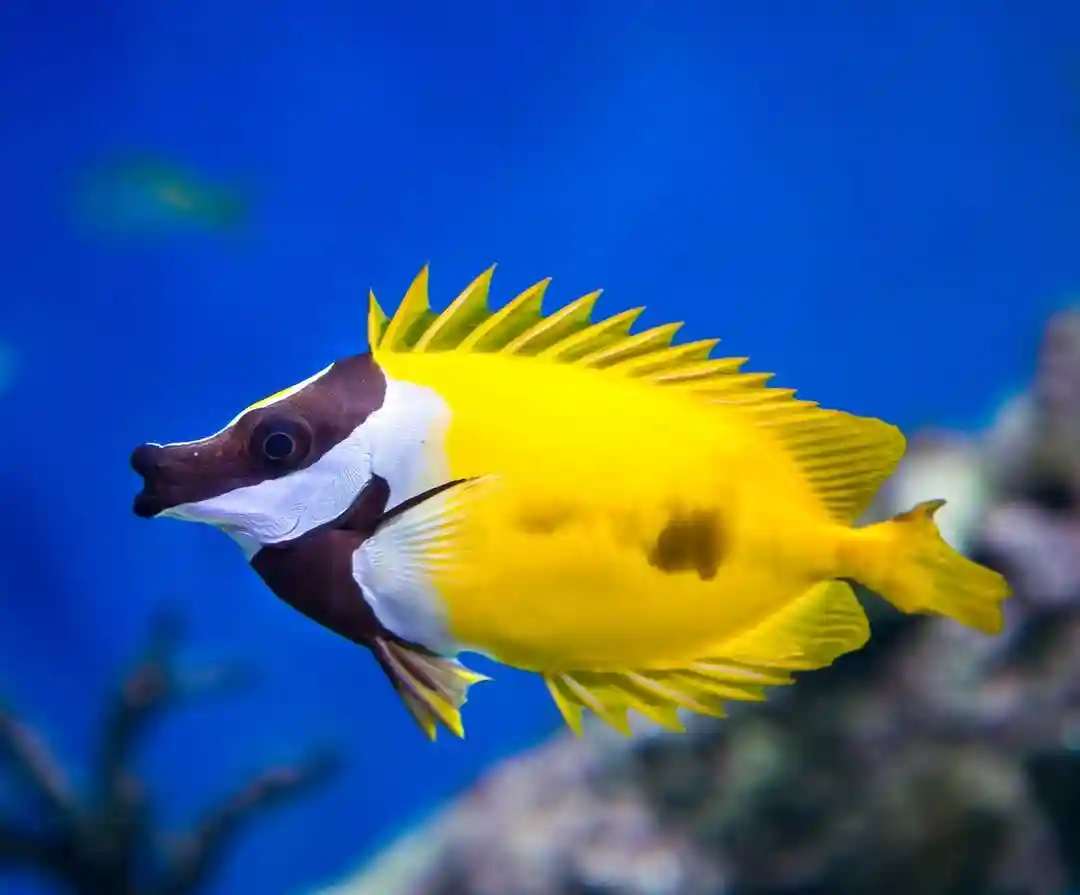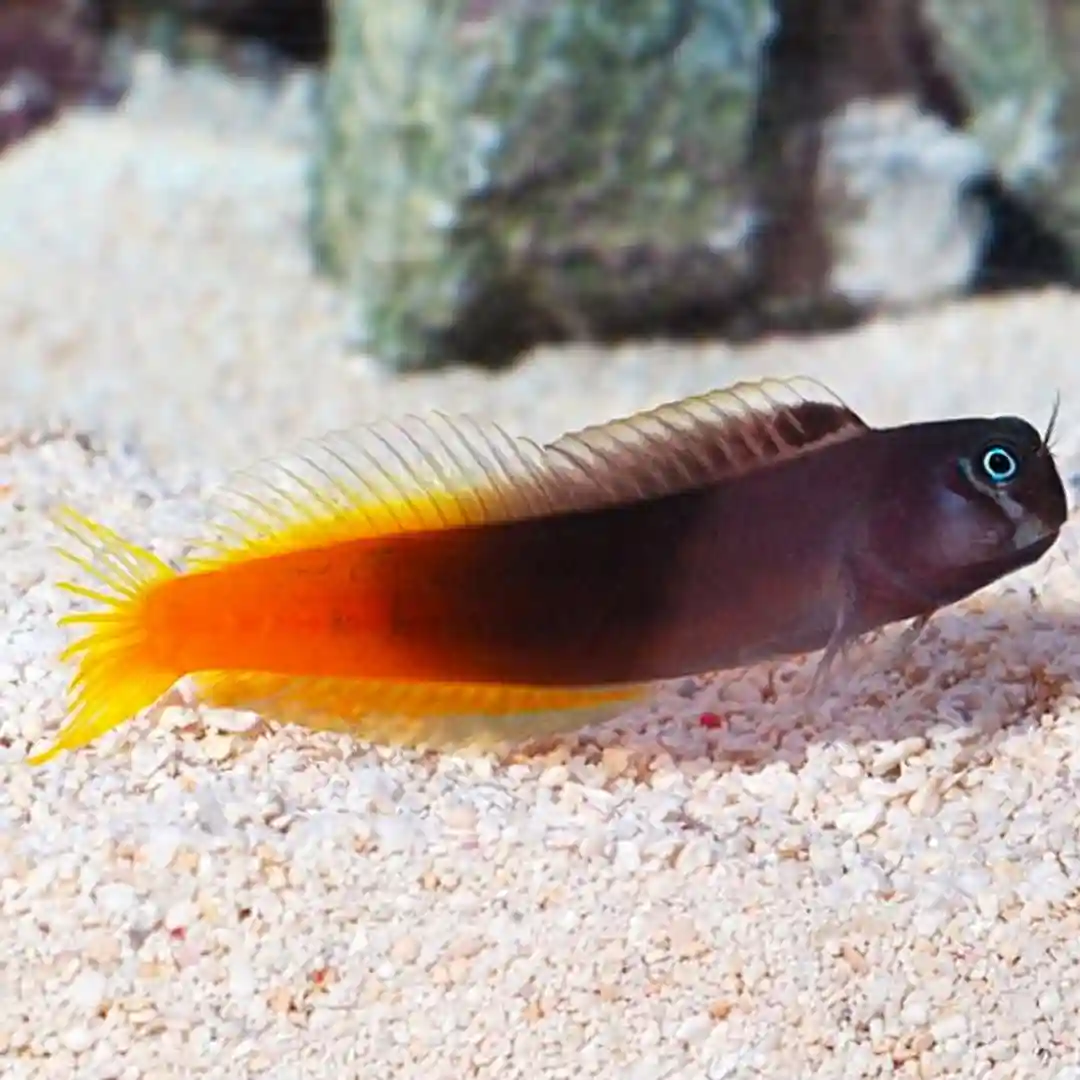Fairy Wrasse Care: Feeding, Mates & Reef Guide
Fairy Wrasses (Cirrhilabrus spp.) are among the most eye-catching and peaceful saltwater fish you can add to a reef tank. Their electric colors, constant motion, and easygoing nature make them a perfect fit for hobbyists looking to add both beauty and energy to their aquarium. Whether you’re considering your first wrasse or want to add another to your community tank, this guide will help you understand their care, diet, tank mates, and even breeding behavior.
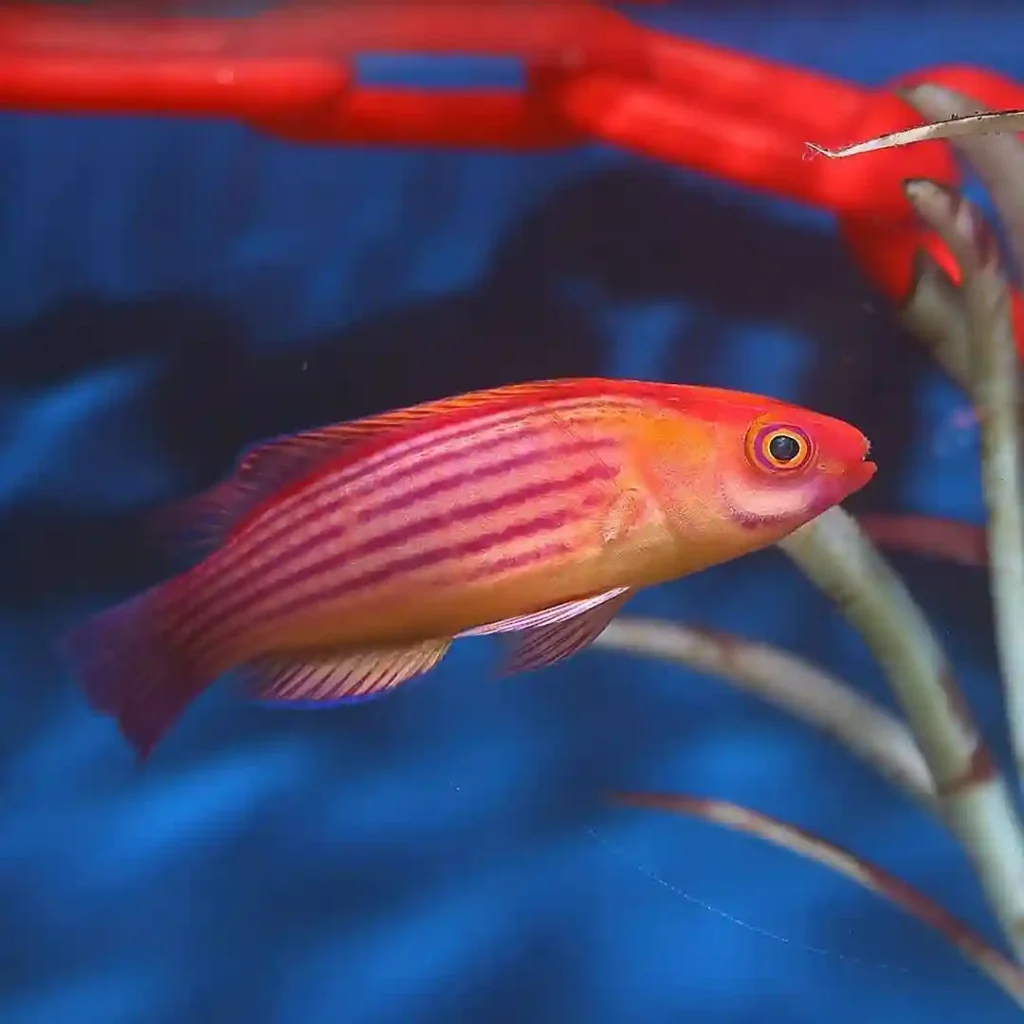
Quick Species Profile
| Trait | Details |
| Common Name | Fairy Wrasse |
| Scientific Genus | Cirrhilabrus |
| Origin | Indo-Pacific, Red Sea |
| Size | 3–5 inches (varies by species) |
| Lifespan | 5–8 years |
| Temperament | Peaceful |
| Diet | Carnivorous |
| Minimum Tank Size | 55 gallons |
| Reef-Safe | Yes |
| Care Level | Easy to Moderate |
Types of Fairy Wrasses
There are over 60 recognized species of Fairy Wrasses, each boasting different color patterns and regional traits. Popular varieties include the Exquisite Fairy Wrasse, Scott’s Fairy Wrasse, Lubbock’s Fairy Wrasse, and the Red Velvet Wrasse. Males are often more vividly colored than females and may change appearance based on mood or dominance.
Despite their variety, most Fairy Wrasses share similar care needs, making them interchangeable from a husbandry perspective. Some species are more active or slightly more assertive, so always research individual temperament before adding multiples.
Appearance and Behavior
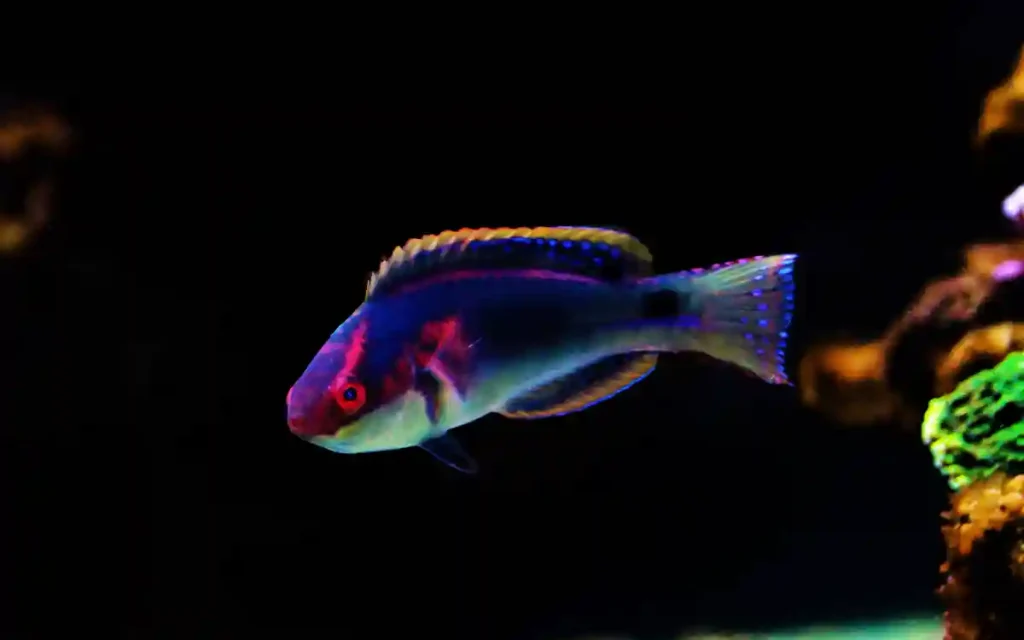
Fairy Wrasses are known for their graceful swimming style and radiant coloration. They’re most active during the day and spend much of their time cruising the upper to mid-levels of the tank.
Males can display courtship “dances” where their colors intensify, and they flash their fins rapidly while darting around. At night, these fish hide in rockwork or bury themselves slightly under sand. Some species even create a mucus cocoon to mask their scent from predators while they sleep.
They’re not aggressive and typically avoid conflict, but can be startled easily—especially in tanks without hiding places.
Tank Setup and Size Requirements
Fairy Wrasses are active swimmers and need a tank that allows space to move. A minimum of 55 gallons is recommended, with 75+ gallons preferred for multiple wrasses or larger varieties.
They appreciate plenty of live rock for shelter, especially when adjusting to new environments. The ideal setup includes:
- Moderate water flow
- Stable rock structures with caves and overhangs
- Ample open space for swimming
- Tight-fitting lid or mesh top (they are excellent jumpers)
Reef lighting brings out their vibrant hues, and while they don’t need sand to burrow, soft substrate reduces injury risks if they dive when startled.
Diet and Feeding
Fairy Wrasses are carnivores and require a protein-rich diet. In the wild, they feed on zooplankton and small invertebrates. In captivity, they accept a wide range of prepared foods, including:
- Frozen mysis shrimp
- Brine shrimp
- Finely chopped seafood
- Enriched flakes and marine pellets
Feed 2–3 times per day in small amounts. Their high metabolism and constant activity make frequent feedings essential. Rotating food sources keeps their coloration vibrant and helps support immune health.
Supplementing with garlic or vitamin-enriched foods during acclimation or post-shipping stress is helpful.
Compatible Tank Mates
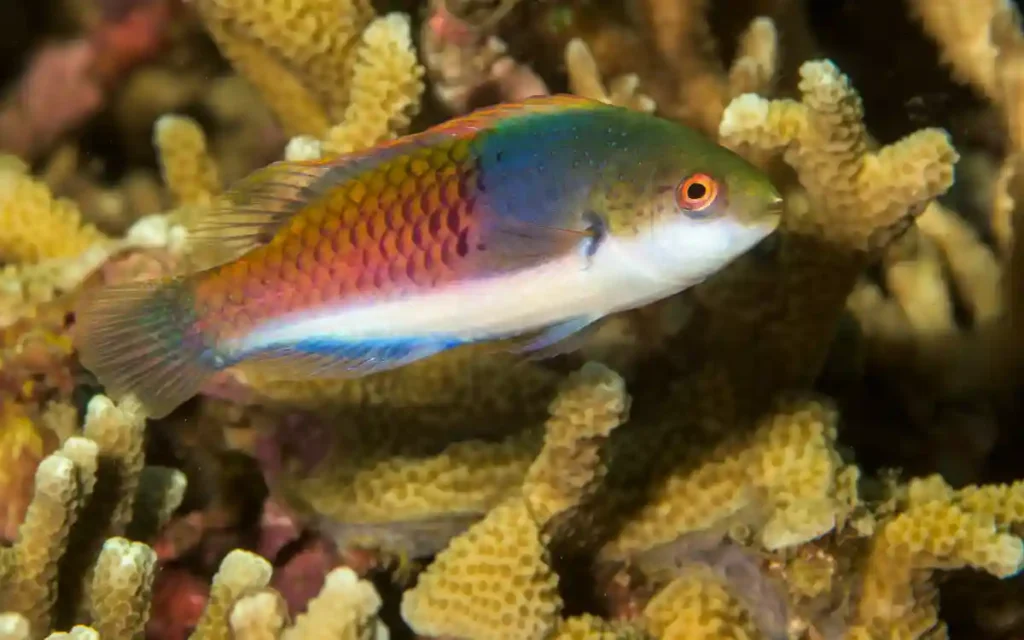
Fairy Wrasses are among the most peaceful fish in the hobby and mix well with a wide range of reef-safe species. Ideal companions include:
- Clownfish
- Gobies
- Firefish
- Banggai Cardinalfish
- Chromis
- Anthias
They generally do well with other Fairy Wrasses when kept in large tanks (75+ gallons), especially if the fish differ in color or species. Avoid keeping multiple males of the same species in confined tanks—they may compete for dominance.
Aggressive species like dottybacks, triggers, and large angelfish should be avoided, as they can stress or harass Fairy Wrasses.
Reef Compatibility
Fairy Wrasses are 100% reef-safe. They do not nip corals, rearrange sand, or disturb invertebrates. This makes them ideal for both soft coral and SPS-heavy reef tanks.
They won’t compete with coral-feeding species or harm feather dusters, clams, or shrimp. In fact, their constant swimming in the open water column helps distribute nutrients and encourages natural behaviors in other fish.
Because they’re such reliable reef residents, many reefers choose Fairy Wrasses as centerpiece fish in peaceful reef aquariums.
Common Health Issues
While hardy overall, Fairy Wrasses can suffer from stress-related illnesses if tank conditions are unstable or if they are bullied by more aggressive fish.
Watch for signs of:
- Marine ich
- Frayed fins from jumping incidents
- Lethargy due to low oxygen or poor flow
- Rapid breathing or flashing (indicates stress or parasites)
Always quarantine new arrivals for at least 2 weeks. Acclimation boxes can also help reduce aggression from established fish in the main tank.
Stable parameters, good filtration, and oxygenation prevent 90% of potential issues with Fairy Wrasses.
Breeding Behavior
Breeding Fairy Wrasses in home aquariums is rare but not impossible. Males will often court females by flaring their fins, intensifying their coloration, and performing rapid zig-zag swims.
They are protogynous hermaphrodites—meaning some females can change into males if no dominant male is present. Spawning usually happens near dusk, where eggs and sperm are released into the water column.
Raising the larvae requires specialized rearing systems, and successful breeding is usually reported in public aquariums or by expert breeders.
If you want to attempt pairing, choose a known bonded pair or start with one male and multiple females in a large tank with ample space and minimal competition.
Fun Facts About Fairy Wrasses
- They sleep in mucus cocoons to hide their scent from nocturnal predators.
- Some species “flash” color displays at dusk, especially during courtship.
- Found from shallow lagoons to over 150 feet deep depending on the species.
- Can change sex—females may become males when dominant males are absent.
- Rarely seen motionless—Fairy Wrasses are always on the move.
Frequently Asked Questions
Are Fairy Wrasses good for reef tanks?
Yes. They are fully reef-safe and won’t harm corals or invertebrates.
Do Fairy Wrasses jump out of tanks?
Yes, they are notorious jumpers. A secure lid or mesh screen is essential.
Can I keep multiple Fairy Wrasses together?
Yes, if the tank is large enough and the species are different or you have one male with females.
How long do Fairy Wrasses live?
With proper care, they can live 5 to 8 years in captivity.
Can they change gender?
Yes. In many species, a dominant female can become male when no other males are present.
Final Thoughts
Fairy Wrasses are a perfect blend of beauty, activity, and peace. Their reef-safe nature, low maintenance needs, and compatibility with other community fish make them one of the most popular wrasses in the saltwater hobby. Just give them space to swim, plenty of rock for shelter, and a secure lid—and they’ll light up your tank with their mesmerizing colors and constant motion.

